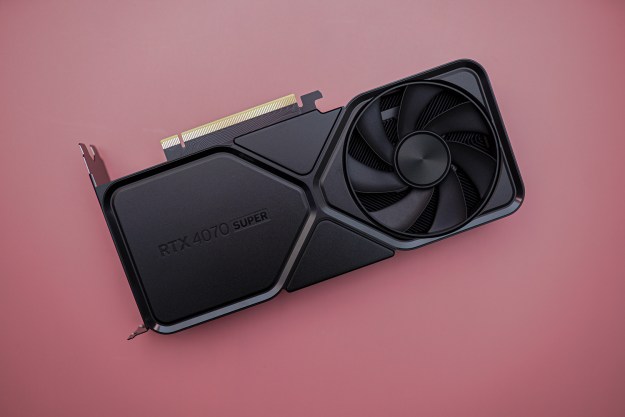
Nvidia’s Super graphics cards are here, and they’re downright impressive. They offer boosted performance over their non-super counterparts and apart from the RTX 2060 Super, they all come in at the same prices too. The timing of this launch is no coincidence, though, with AMD’s upcoming RX 5700 RDNA graphics cards just around the corner. But has Nvidia been successful in stealing AMD’s thunder?
An argument could certainly be made that the new Super GPUs are what Nvidia’s Turing graphics cards should have performed like when first released in 2018. It even feels like that’s where they could have performed too, because these new cards are merely cut-back versions of existing GPUs. The RTX 2070 Super is a modified RTX 2080 with fewer CUDA cores, the RTX 2060 Super a 2070 with fewer CUDA cores and extra memory.
Even if Nvidia could have offered this performance at the launch of its RTX cards, it is at least doing so now. In theory, these cards should compete very favorably with AMD’s upcoming RX 5700 XT and 5700. We don’t have hard performance numbers for AMD’s new GPUs just yet, but we know AMD claims they perform in excess of their non-refreshed Nvidia counterparts. The RX 5700 is slated as being more powerful than the RTX 2060, and the 5700 XT more powerful than the RTX 2070.
How these cards compare against the new Super cards remains to be seen, and there’s certainly still every opportunity for AMD to swoop in and make its mark on this generation of graphics hardware. But it could be a close call. AMD’s RX 5700 XT and 5700 are set to be priced at $449 and $379, respectively, with Nvidia’s Super RTX 2060, 2070, and 2080, priced at $400, $500, and $600, respectively. Even if AMD’s new cards under-perform their Nvidia counterparts a little, that pricing difference could be enough for those looking to buy a new graphics card.

There are also features like ray tracing, DLSS, and AMD’s own image sharpening to consider, which could sway people one way or the other, and could suggest a greater value proposition on Nvidia’s end of things.
In the here and now, with days to go until AMD’s new cards hit digital shelves and the review embargoes lift, are we still excited for the RX 5700 series? Have the Nvidia Super-powered RTX cards whetted our appetite for more, or filled us up to the point where we’re not as interested in what comes next?
If anything, we’re more excited than ever to see how these new cards line up. AMD’s new cards will still provide some much-needed competition in the graphics card market, and we have to wonder whether the Super RTX cards would even exist if AMD hadn’t provided that little bit of extra pressure to the market. But the RX 5700 XT is going to have to hold true to AMD’s best-case scenarios to be a truly credible competitor to Nvidia’s new Super GPUs. With the more favorable bang for buck now offered by Nvidia’s cards, a few dollars off that price may not be enough to make the Navi cards anything special.
Regardless of how things shake up, these next couple of weeks are a great time to upgrade your PC’s graphics.
Editors' Recommendations
- The RTX 4090 is more popular on Steam than any AMD GPU
- AMD’s canceled GPU could have crushed Nvidia
- The sad reality of AMD’s next-gen GPUs comes into view
- AMD finally has a strategy to beat Nvidia’s DLSS
- Nvidia is the ‘GPU cartel,’ says former AMD Radeon manager




